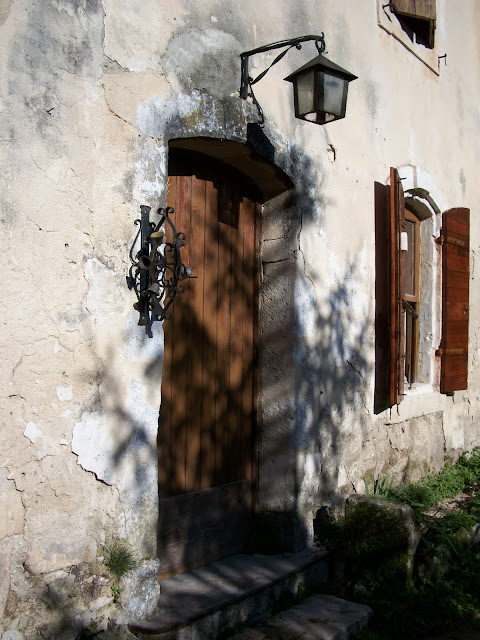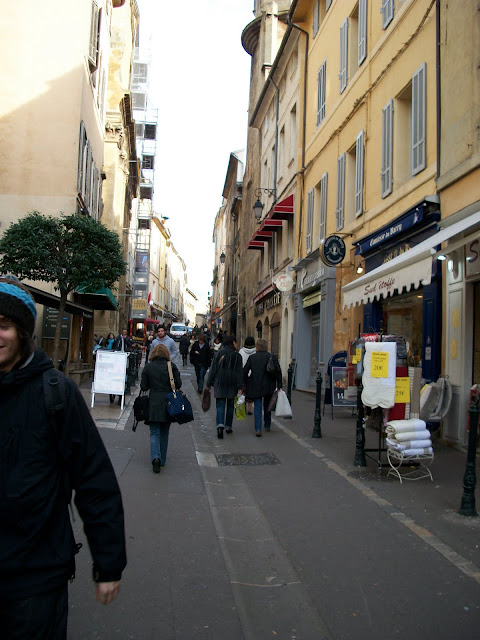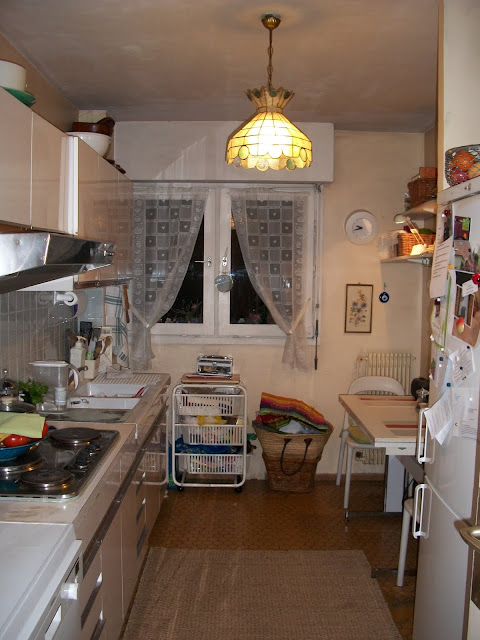I finally have my schedule for school - I dropped down from level 5 to level 4CC. My schedule (mon emploi de temps) is as follows:
- Monday - NO CLASS
- Tuesday - Grammar from 9-1, English Translation 2-4
- Wednesday - The 5th Republic 2-4
- Thursday - Grammar 9-12, Writing Stylistics 2-4
- Friday - Grammar 10-1
Traduction anglaise is my favorite. Today we translated a few sentences of Harry Potter. All the translation is from English into French. It's very difficult because there is no direct translation - we have to dissect the grammar and then also focus (this is the hard part) on the sentiment the writer is trying to convey - it's very interesting. For example, there is no way of really saying in French "they sneaked out of the conference" or "he dashed up the stairs" because in French the sentence structure is reversed. When I translate those sentences, I have to say "he climbed the stairs" and then add some adjectives onto the end like "à toute vitesse", meaning "at full speed." Or I say, "they left the conference furtively" or something. I love the class because we pull apart each word or phrase or idiom, often there are 4 or 5 that mean the same thing. But each phrase is like a recipe - different sentiments make up each one, they all have slightly different connotations, and choosing the right one to translate and convey accurately what someone is trying to say is actually pretty exciting.
If you're curious what languages I'm speaking on a daily basis, all of my classes are taught in French and so I speak French at school and with my house mother, but my American friends and I speak English a lot of the time. One of my friends from school is a Norweigan girl, Katya. She is 19 and taking a gap year before law school - in Norway, you don't have to go separately to university and graduate school. You have 13 years of schooling instead of 12 until the age of 19 and then you can immediately go to law classes! She tells me what it's like living in a very socialist country and how similar Norweigan is to other Scandinavian countries and languages. She says she can understand spoken Swedish because it is similar, but written Swedish is a mystery. She says Danish is ancient Norweigan, and that her language evolved from Danish, so she understands most Danish in writing, but not spoken - according to Katya it sounds like they have a potato in their mouths!
My roommates, Lauren and Katie, are sweet girls with only very basic French. Lauren is 20 and from New York. She wants to go to law school and work for a publishing company, or become a book publisher. Katie is also 20, from Illinois, and her boyfriend is living in Aix as well - his name is Dylan too but everyone calls him DJ (luckily). I am still setting up my life in Aix, looking for items I did not bring at the Monoprix, such as a coffee thermos - to no avail! The French absolutely do not believe in coffee to go.
___________________________________________________
___________________________________________________
I just took a break from writing this email for dinner. Madame made a huge meal, but I had eaten a very late lunch, so I was no longer hungry. I only had a small portion of everything, and after repeatedly being offered another helping, which I tried to refuse, I finally accepted. I was so full I thought I would burst, and then she offered me a vanilla pudding. When I said "non, merci, je n'ai plus faim" ("no thank you, I'm not hungry anymore") she pointed an accusing finger at me and said "Regime!" which means diet! The French and their meals, its unbelievable!



























